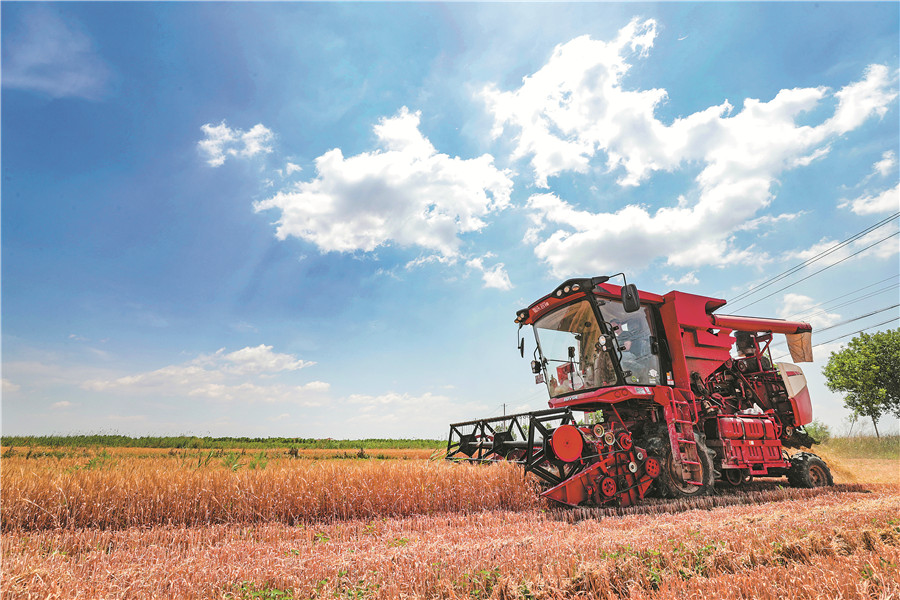Barren terrain undergoes dramatic transformation


Hard work pays off as seawater grain produced from salt-affected soil
A large expanse of fragrant seawater rice plants was harvested on Nov 1 at the Yuwang Wetland in Weifang, a coastal city in Shandong province.
Such rice is salt-tolerant, but is not grown in the sea. Several years ago, the area around the wetland was dubbed "white land" by locals, as the high salt content left a distinctive "frost" on the top layer of soil.
Tian Guoqing, general manager of Shandong Binyuan Agricultural Science and Technology Co, which runs the seawater rice area in the city's Hanting district, said, "The 3,866-plus hectares of crops are expected to produce more rice this year than last year."
After three years' work to manage the salt-affected soil and cultivate salt-tolerant seeds, the once-barren land has been transformed into a productive area for seawater rice, demonstrating efficient use of salt-affected soil.
Carlos Watson, representative of the UN Food and Agriculture Organization, or FAO, in China, said at an international conference on salt-affected soil held in Weifang last month, "Soil salinization is a significant problem worldwide."
According to State of the World's Land and Water Resources for Food and Agriculture, published by the FAO last year, more than 1,100 million hectares of soil are affected by salinity and sodicity (which degrades soil properties), Watson said. Of this total, 60 percent of the soil is saline, 26 percent sodic, and the remaining 14 percent saline-sodic.
China has 100 million hectares of salt-affected soil, about the size of Egypt, and one-third of this soil has the potential for agricultural activities, according to the Ministry of Agriculture and Rural Affairs.
Agricultural workers are committed to comprehensively using salt-affected soil — employing methods ranging from managing the soil to make it suitable for crops, to breeding salt-tolerant crop varieties.
Xu Xing, professor of agricultural science at Ningxia University in Ningxia Hui autonomous region, said, "We have cultivated salt-tolerant goji (Chinese wolfberries), corn, rice and grapes on the Hetao Plain along the upper Yellow River, adding color to this once-white land."
In Shandong, more than 386,600 hectares of salt-affected soil has been treated to grow crops and fruit.



































